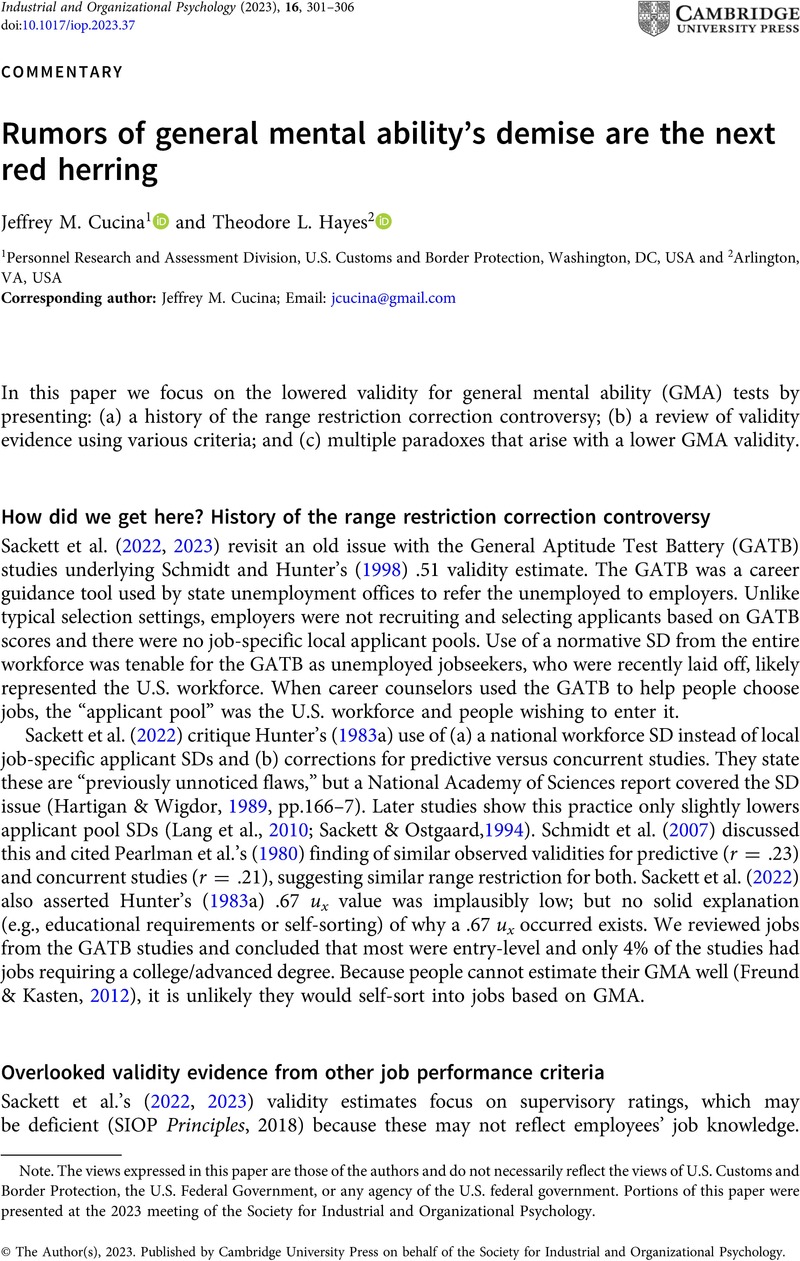Article contents
Rumors of general mental ability’s demise are the next red herring
Published online by Cambridge University Press: 31 August 2023
Abstract

- Type
- Commentaries
- Information
- Copyright
- © The Author(s), 2023. Published by Cambridge University Press on behalf of the Society for Industrial and Organizational Psychology
Footnotes
Note. The views expressed in this paper are those of the authors and do not necessarily reflect the views of U.S. Customs and Border Protection, the U.S. Federal Government, or any agency of the U.S. federal government. Portions of this paper were presented at the 2023 meeting of the Society for Industrial and Organizational Psychology.
References
- 1
- Cited by




